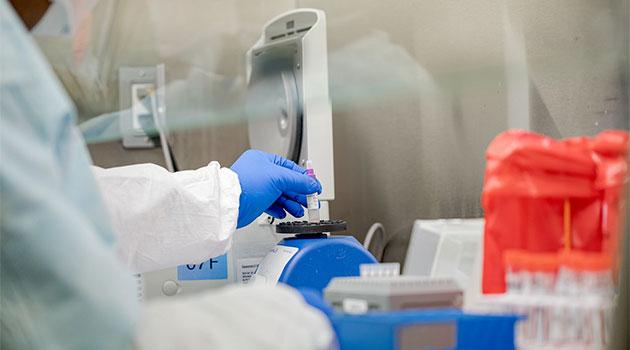The journal Nature Medicine has published a study by an international team of scientists analyzing the genome of the novel SARS-CoV-2 coronavirus that has caused the COVID-19 pandemic. The team reports that there is no evidence of the novel virus having been produced in a laboratory or otherwise artificially engineered.
An article about the study has been translated into Czech and published by scholars from the Institute of Vertebrate Biology at the Academy of Sciences of the Czech Republic. The genome of the novel coronavirus was sequenced by Chinese scientists shortly after the COVID-19 epidemic began.
The Chinese scientists also mapped the source of the infection to a single introduction of the virus into the human population. That means the infection has not come from more than one source.
A team of scientists from Australia, Great Britain and the USA then used that data to compare the genome sequencing to the other strains of coronavirus known so far. The scientists focused on specific sites in the S-protein of the virus that facilitate its entering the cells of the host.
The first site they focused on in the virus is called the receptor-binding domain (RBD), responsible for the virus connecting to the receptor in the host’s target cells. The second site they focused on is called the “cleavage site”, which enzymes in the host cell recognize and then crack open.
Once that happens, a protein in the virus is activated that can then enter the host cells. The analysis has demonstrated that the novel coronavirus is most closely related to a coronavirus in bats.
Despite its similarity to the bat virus, however, the RBD of the novel coronavirus discovered in human beings is very effectively binding to the human form of the ACE2 receptor, which is located inside our lung cells. Other coronaviruses known so far to be pathogenic to human beings use a different RBD to bind to that same human receptor.
According to the scientists, the RBD associated with the novel coronavirus is an apparently “unique consequence of natural selection”, a mutation that took place either in a bat, or in a human being once it was transmitted, or inside a different, intermediate animal host whose ACE2 receptor is similar to that of humans. Similar indications were found by scientists at the cleavage site on the novel coronavirus as well.
Researchers also infer that the novel coronavirus originated naturally by pointing out that if it had been artificially created, those producing it would have derived it from one of the coronaviruses that are already well-mapped and commonly cultivated in laboratories. A designer artificially creating the virus would have used the known solutions for the virus to enter human cells.
However, according to the head of the research team, immunologist and microbiologist Kristian Andersen, PhD of Scripps Research in the USA, the specific mutation in the RBD protein and its different molecular structure rule out the possibility that the virus is of “artificial” origin. The team also described two possible origins of the novel coronavirus.
According to the first scenario, the virus developed into its currently pathogenic form in an animal and then crossed over into the human species. The outbreaks of the coronaviruses that caused the diseases MERS and SARS first arose in that way.
However, scientists say there is not yet a documented case of direct transmission of coronavirus from bats to humans, so an intermediate host could be involved in COVID-19. The first scenario would mean the epidemic among humans would break out quickly because the virus would already be pathogenic during its transfer to humans and could spread rapidly.
A second scenario posits that a non-pathogenic version of the virus crossed from an animal host into humans and only then became harmful once it mutated inside a human. Some coronaviruses from pangolins, armadillo-like mammals found in Asia and Africa, have an RBD structure very similar to that of SARS-CoV-2, so a coronavirus from a pangolin could possibly have been transmitted to a human, either directly or through an intermediary host, after which the corresponding cleavage site could have evolved within the human host.
If the virus first accessed the human species as a pathogen, then according to a co-author of the study, Andrew Rambaut from Ediburgh University, there is a higher risk of new outbreaks. If the pathogenic strain is also circulating in the animals from whom we contracted it, then there is a chance of re-transmission.
Repeated outbreaks are less likely if the second scenario is the case, because the version of the virus circulating in animals would be non-pathogenic to humans. However, researchers say that it is difficult, if not impossible, to ascertain which route the virus actually took into the human species.

